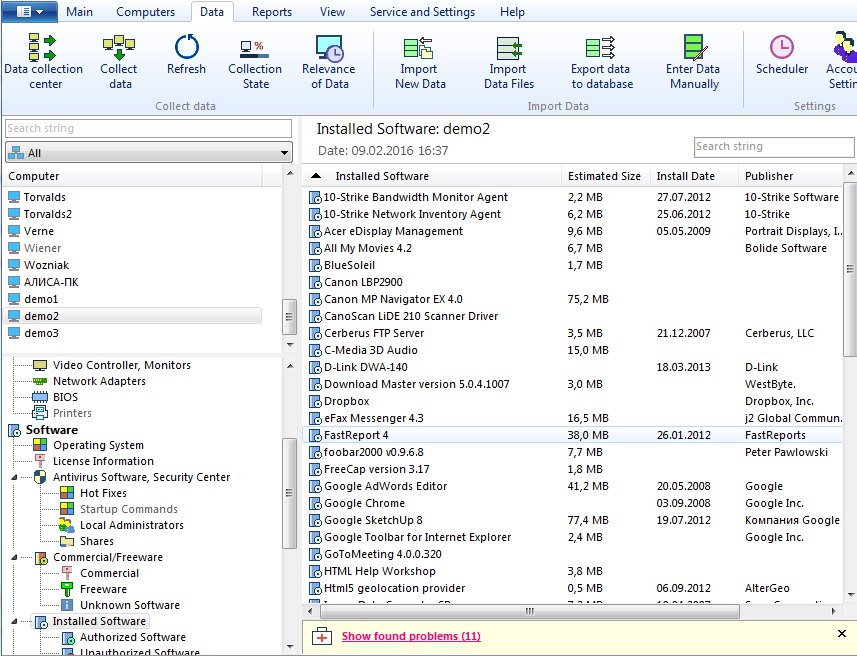In today’s fast-paced business environment, efficient inventory management is crucial for success, and computer programs for inventory play a pivotal role in achieving this goal. These software solutions simplify the complexities of tracking stock levels, managing orders, and forecasting demand, making the often daunting task of inventory control much more manageable.
From small businesses to large corporations, the right inventory software can streamline operations, reduce errors, and save valuable time and resources. With various options available, understanding the key features and benefits of these programs is essential for any organization aiming to optimize its inventory processes.
In today’s fast-paced, interconnected society, digital technology pervades nearly every aspect of our lives. From smartphones to social media, we rely heavily on digital tools for communication, entertainment, and information. However, this extensive reliance on technology raises critical questions about our digital well-being. What does it mean to be digitally well, and why is it essential in the modern age?
Let’s explore this multifaceted concept, its challenges, and ways to foster a healthier relationship with technology.
Understanding Digital Well-being
Digital well-being refers to the state of physical and mental health that results from our interactions with digital technology. It encompasses various factors, including our online habits, the impact of technology on our mental health, and the quality of our digital experiences. In essence, it’s about finding a balance between the benefits of technology and the potential adverse effects it can have on our lives.
The Double-Edged Sword of Technology
While technology offers tremendous benefits, such as connectivity and access to vast information, it also has its downsides. Issues like social media addiction, cyberbullying, and information overload are prevalent in our digital landscape. For example, many individuals report feeling overwhelmed by the sheer volume of content available online, leading to feelings of anxiety and stress. Furthermore, the constant notifications and alerts from our devices can disrupt our focus and affect our productivity.
Recognizing Signs of Poor Digital Well-being
To maintain good digital well-being, it’s crucial to recognize the signs of adverse effects caused by excessive technology use. Common indicators include:
- Increased anxiety: Constantly checking notifications or feeling the need to be online can lead to heightened stress levels.
- Decreased productivity: The frequent distractions from digital devices can hinder our ability to concentrate and accomplish tasks efficiently.
- Social isolation: Although technology can connect us, excessive use can lead to decreased face-to-face interactions, fostering feelings of loneliness.
- Sleep disruptions: The blue light emitted by screens can interfere with our sleep patterns, leading to fatigue and irritability.
Strategies for Enhancing Digital Well-being
Fortunately, there are several strategies that individuals can adopt to enhance their digital well-being:
1. Set Boundaries
Establish clear boundaries for technology use. For example, consider designating specific times for checking emails or social media, and stick to these limits. This practice helps create a healthier balance between online and offline activities.
2. Practice Mindfulness
Engaging in mindfulness practices can help you become more aware of your digital habits. Take a moment to reflect on how certain online activities make you feel. If scrolling through social media leads to negative emotions, consider limiting that activity.
3. Digital Detox
Take regular breaks from technology. Whether it’s a few hours each day or a full weekend without screens, disconnecting can help you recharge and gain perspective on your digital consumption habits.
4. Curate Your Digital Environment
Be intentional about the content you consume online. Follow accounts and brands that uplift and inspire you, and unfollow those that contribute to negativity or stress.
5. Foster Real-Life Connections
Make an effort to engage in face-to-face interactions. Building strong relationships offline can lead to deeper fulfillment and help combat feelings of isolation.
Promoting Digital Well-being in the Workplace
Organizations also play a significant role in promoting digital well-being among their employees. Here are a few strategies that businesses can implement:
- Flexible Work Policies: Encourage employees to have flexible schedules that allow for a healthy work-life balance, reducing the likelihood of burnout.
- Training and Resources: Provide training on managing digital distractions and resources to help employees navigate the challenges of remote work.
- Encourage Breaks: Promote the importance of taking regular breaks throughout the day to recharge and refocus.
The Future of Digital Well-being
As technology continues to evolve, so too will the challenges associated with digital well-being. Innovations such as artificial intelligence, virtual reality, and augmented reality present new opportunities and dilemmas for our well-being. It is essential to remain vigilant and adaptable in finding ways to create a healthier digital landscape.
Conclusion
In conclusion, digital well-being is an essential aspect of our lives in this increasingly connected world. By recognizing the signs of poor digital well-being and adopting strategies to enhance it, we can foster a healthier relationship with technology. Whether through personal efforts or organizational initiatives, promoting digital well-being is crucial for maintaining our mental and physical health in the digital age.
Embracing a balanced approach to technology use will empower us to enjoy its benefits while mitigating its challenges.
Quick FAQs
What are the key features to look for in inventory software?
Key features include real-time tracking, order management, reporting capabilities, and user-friendly interfaces.
How can inventory programs help reduce costs?
They minimize excess stock, reduce waste, and streamline order processes, leading to significant cost savings.
Can inventory software integrate with other business systems?
Yes, most modern inventory programs can integrate with accounting, e-commerce, and supply chain management systems for seamless operations.
Is training necessary to use inventory software effectively?
While many programs are user-friendly, training can enhance efficiency and ensure that all features are utilized effectively.
How often should inventory levels be reviewed?
Regular reviews, ideally on a weekly or monthly basis, help maintain accurate stock levels and prevent overstocking or stockouts.












